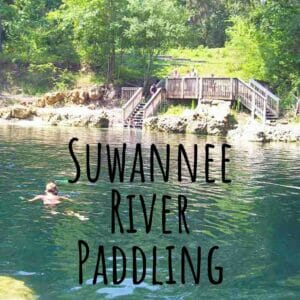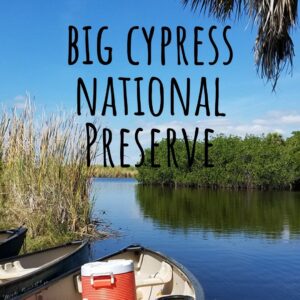
Suwannee River Paddling
Suwannee River Paddling is the best way to experience real Florida! The many springs along the Suwannee River system are all unique, and offer a different experience. Some are great for swimming, some for cave diving, others are elusive and sometimes hidden by the river mixing zone phenomenon.
There are river camps accessible only by paddling, wildlife and scenery unique to the Suwannee that most people will never experience. Visitors can peacefully paddle the river by canoe or kayak, and easily stop at the many springs along the way.
Suwannee River Paddling is the best way to experience this historic river and it's many natural springs!
How will you know if there’s a spring along the river? Easy, you’ll see bright blue water off to the side of the brownish water you’re currently paddling in! You’ll probably see people playing in the water and a sandy bank where you can park your canoe or kayak.
When you enter these springs from the river, there are no entrance fees.
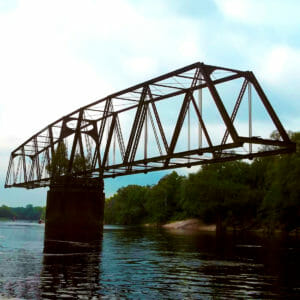
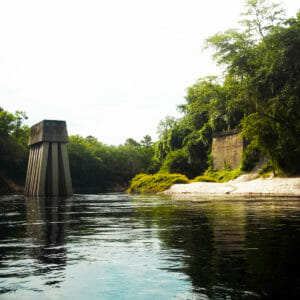
Along the way, there are also river camps that are part of the State Park system. If you keep food, water and your tent/clothing in your canoe or kayak and you paddle long enough along the river, you’ll stumble upon a campsite. But best to get a map of the system and have a plan in place.
Drew Bridge used for the Suwannee and San Pedro Railroad was in use from approximately 1901 to 1918, and is possibly the oldest swing bridge in the U.S. (much of its history has been lost)
The Suwannee flows through the south of Georgia and north Florida for about 246 miles and then rolls into the Gulf of Mexico. The color and temperature of the Suwannee river is vastly different than the incredible natural phenomenon of the crystal clear blue freshwater springs INSIDE parts of the Suwanee River. You have to see it in person to believe it.
Hint: whether you visit the springs in winter or summer, the temperature remains a chilly (approximate) 70 degrees. On a typically hot summer day, it’s a welcomed activity to jump into these chilly springs. But in winter months and up until March or April, it’s cold… very very cold.
If you plan to paddle the Suwannee during rainy season and the river’s water table is high, it’s possible it will cover over these springs and the experience won’t be as enjoyable. And if you visit during a drought and the water table is too low, it’s possible you’ll encounter other challenges like dragging your canoe/kayak over dry spots along the river, and the water level in these springs being very low.

Planning a Day of Paddling
We recommend picking a section of the Suwannee where there are are least two springs to enjoy. If you’re an experienced paddler, a 5-10 mile day is very pleasant. This will get you to where you want to go (river camping?) while being able to take plenty of spring-breaks (pun, get it?!! : )
The 5-10 miles a day plan can take a few hours to a full day, depending on how strong the currents are, the current water levels, and how experienced/active the paddlers are.
Watch Water Levels and Plan Ahead!
When planning a paddling trip on the Suwannee, pay close attention to current and anticipated water levels. Too low and you’ll have spots where you’ll need to drag or carry your canoe/kayak over rocks and logs. Too high and you won’t be able to see the springs!
They’ll still be there, but the Suwannee’s murky brownish colored water will cover over the bright blue crystal clear spring water. And in case you’re wondering, the Suwannee’s brownish river water gets its color from the vast vegetation which creates tannins and that brownish tint. The water is very clean and healthy, as evident with all the fish and wildlife that live there.
And if you’re lucky and depending on the time of year, you may even see manatees in the Suwannee while you’re paddling!
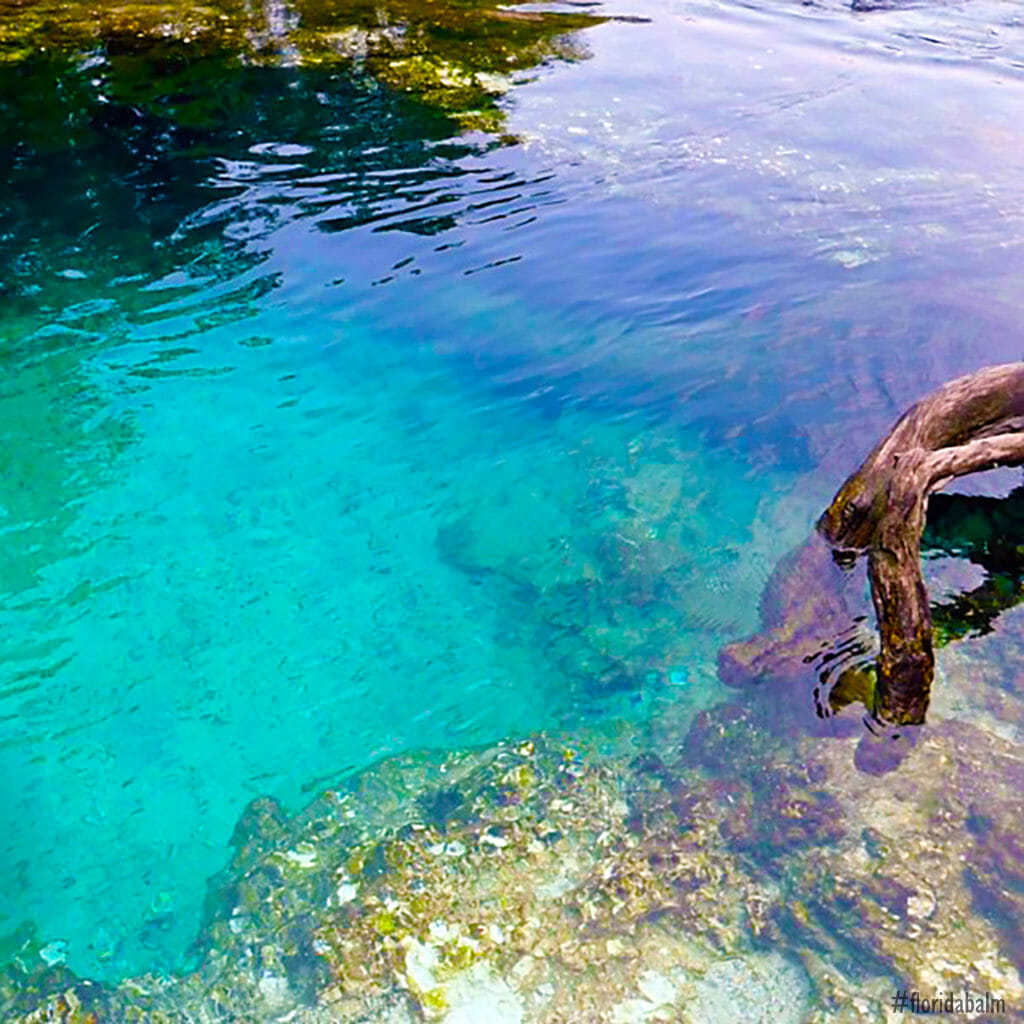
Way down the Suwannee River
Far, Far away
That’s where my heart is yearning ever
Home where the old folks stay
~ Song, Stephen Foster, 1851
River Mixing Zone Phenomenon
The dark, tannin-stained water from the Suwannee River meets the clear, blue water from the natural springs that feed into it. The contrast between the two types of water creates a distinctive boundary where they meet, often resulting in a striking visual effect.
It’s called a “river mixing zone” and when you see it in person, it’s very cool. Well, literally very cool!
The spring water is a constant 72 degrees all year (it’s VERY VERY cold!) and does not mix with the much warmer river water.
What You'll Experience Paddling the Suwannee River
When you paddle the Suwannee, you’ll see acres of natural forests and wildlife up close and personal. There are trees that are hundreds of years old.
And certain times a year you may see huge sturgeon spawning and jumping all around your canoe or kayak.
There are also lots of turtles and all kinds of birds.
There are some spots with wild hogs too!
Are there alligators too? This is a common question but we have never seen them while paddling the Suwannee. However, surely they are there. If it’s a body of water in Florida… there will most likely be alligators! But we’ve stopped to swim and swing off the rope swings and never had any sightings… but always be on the lookout!







